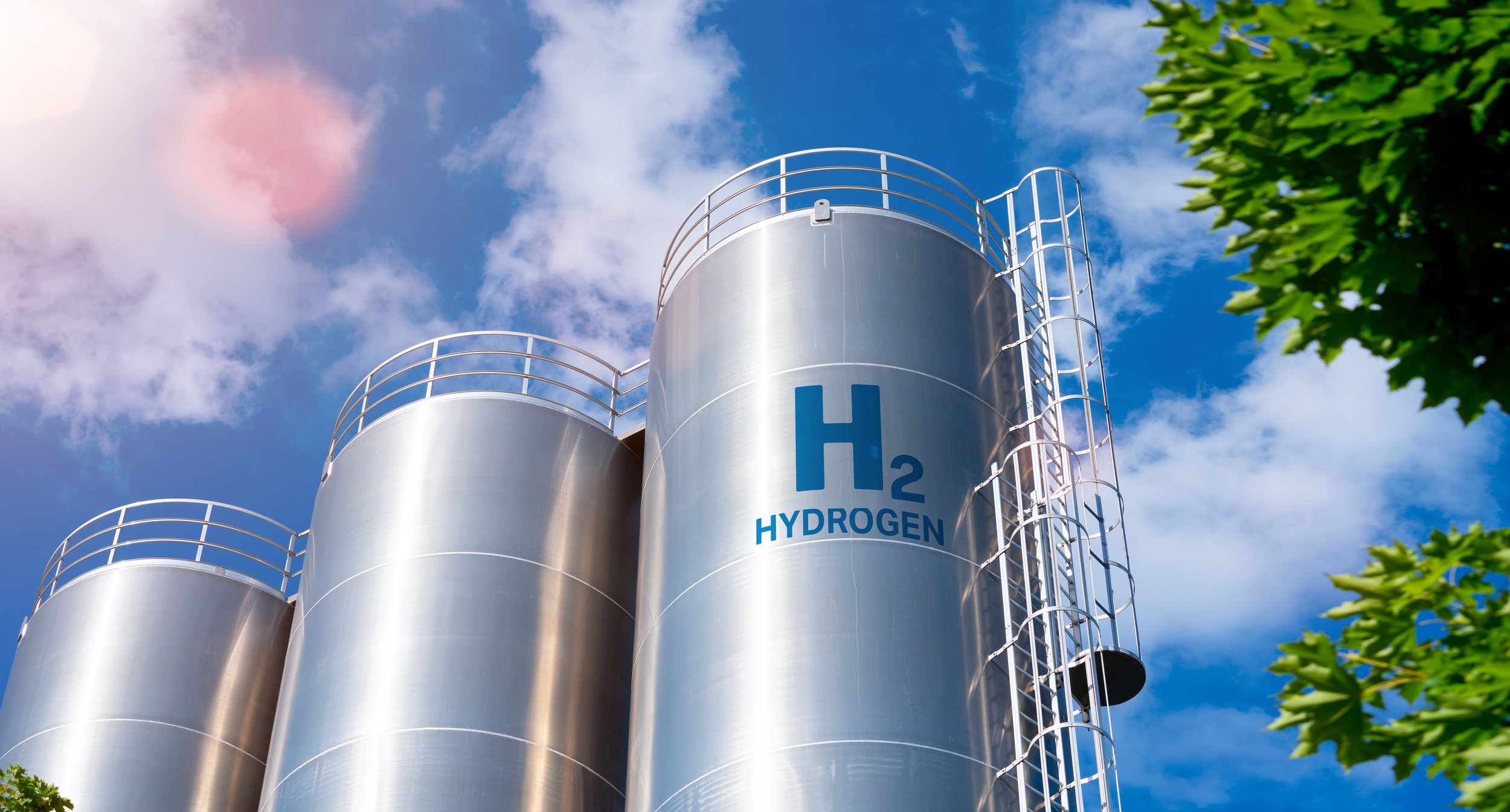
Hydrogen Fuel
The Hydrogen Market in Kentucky
Clean hydrogen has emerged as a critical resource for decarbonizing carbon-intensive sectors of the economy as the U.S. moves toward achieving its goals to reduce greenhouse gas (GHG) emissions by 50% compared to 2005 levels by 2030, and to net zero by 2050. The U.S. Department of Energy and Biden-Harris Administration announced $7 billion to launch seven Regional Clean Hydrogen Hubs (H2Hubs) across the country, catalyzing the growth of clean hydrogen. Hydrogen could be used to decarbonize heavy industries like steel, chemicals and cement, as well as other sectors like transportation and energy.
During 2022, the U.S. Secretary of Energy was expected to create several hydrogen hubs across the country with federal funding. In January of 2022, the state’s Energy and Environment Cabinet formed a Kentucky Hydrogen Hub Workgroup. The primary purpose of the workgroup was to develop projects eligible for funding under the Infrastructure Investment and Jobs Creation Act of 2021. The workgroup stakeholders consist of academic institutions, individuals, organizations, and business focused on hydrogen production, transportation, delivery, and end use utilization opportunities, based on the Cabinet’s energy strategy. More about the EPA’s Hydrogen Hub program here.
In September of 2022, Kentucky’s Governor signed on to an MOU to form the Midwest Hydrogen Coalition along with Illinois, Indiana, Michigan, Minnesota, Ohio and Wisconsin to provide a regional framework for establishing a robust clean hydrogen market, supply chain, and workforce ecosystem in the Midwest, including the potential development of one or more hydrogen hub applications.
And in November 2022, a Southeast Hydrogen Hub coalition was announced, competing for billions in Department of Energy funds to create a hydrogen hub across the Southeast. The Southeast Hydrogen Hub coalition announced the group's initial members including the utilities Dominion Energy Inc., Duke Energy Corp., Louisville Gas & Electric Co. and Kentucky Utilities Co., Southern Co., and the Tennessee Valley Authority, as well as nonprofit research and development firm Battelle, which will file the application to DOE on behalf of the coalition. The coalition is expecting to propose a hydrogen demonstration across six states of around $2.5 billion, spread over the lifetime of the project. The new Southeast coalition, however, did not include any governors as members or future co-signatories to an application.
Kentucky also became a participating state with the Appalachian Hydrogen Hub, which was being led by West Virginia, Ohio, and Pennsylvania.
In 2022, green hydrogen became a favored child of numerous corporate climate strategies and government programs. Supporting its 2021 finding that the global economy must decarbonize immediately to avoid breaching the 1.5 degrees Celsius threshold, the IPCC observed that hydrogen in most of its forms can and should play a role in electric grid decarbonization, industrial power generation, and transportation. While renewable, or green, hydrogen is the climate-optimal fuel, the majority of hydrogen currently produced is based on fossil fuels.
One effort under the U.S. Department of Energy’s new Energy Earthshots Initiative aims to reduce the retail cost of hydrogen for transportation end users to between $4 and $7 per kilogram by 2030; prices typically hover between $8 and $16 per kilogram today. The separate Hydrogen Hub program intends to develop regional hydrogen production, distribution and consumption networks serving multiple end users across the U.S.
Recent Developments:
In October 2023, the White House announced seven regional clean hydrogen hubs that were selected to receive $7 billion in Bipartisan Infrastructure Law funding to accelerate the domestic market for low-cost, clean hydrogen. As mentioned above, Kentucky is affiliated with the Appalachian Hydrogen Hub (ARCH2) and Midwest Hydrogen Hub (MACCH2), which are two of the seven projects that were awarded funds.
-
Types and Uses
Hydrogen is an energy carrier, not an energy source and can deliver or store a tremendous amount of energy. Hydrogen can be used in fuel cells to generate electricity, or power and heat. Today, hydrogen is most commonly used in petroleum refining and fertilizer production, while transportation and utilities are emerging markets.
Due to their high efficiency and zero-or near zero-emissions operation, hydrogen and fuel cells have the potential to reduce greenhouse gas emission in many applications.
There are four main sources for the commercial production of hydrogen: natural gas, oil, coal, and electrolysis; which account for 48%, 30%, 18% and 4% of the world's hydrogen production respectively. Fossil fuels are the dominant source of industrial hydrogen.
Further Reading:
Hydrogen and Fuel Cell Technologies
Office of Energy Development Funding Opportunity Announcements
June DOE announcement on the launch of the Bipartisan Infrastructure Law's $8 billion Clean Hydrogen Hub program.
And here’s a few other H2 Hub resources that may be of interest:
Blog post with an overview of the geographies and groups in which hydrogen hubs are being explored for proposals, as well as their current status.
Blog on the politics and partnerships forming around H2 collaborations.
Associated slideshow with a great deal more background and resource mapping on hydrogen hub opportunities and geographies.
-
Types of Hydrogen Production
Hydrogen is often viewed as an important energy carrier in a future decarbonized world. Currently, most hydrogen is produced by steam reforming of methane in natural gas (“gray hydrogen”), with high carbon dioxide emissions. Increasingly, many propose using carbon capture and storage to reduce these emissions, producing so-called “blue hydrogen,” frequently promoted as low emissions. We undertake the first effort in a peer-reviewed paper to examine the lifecycle greenhouse gas emissions of blue hydrogen accounting for emissions of both carbon dioxide and unburned fugitive methane.
Far from being low carbon, greenhouse gas emissions from the production of blue hydrogen are quite high, particularly due to the release of fugitive methane.
the only sustainable and commercially viable hydrogen is known as “green hydrogen,” which is obtained through the electrolysis of water in special electrochemical cells powered by electricity produced from renewable sources.
-
Resources
The U.S. Department of Energy’s Hydrogen Program: https://www.hydrogen.energy.gov/
Carbon Capture link from Clean Air Task Force: https://www.catf.us/ccsmapus/
White House Announces Regional Hydrogen Hubs, Oct. 2023: https://www.whitehouse.gov/briefing-room/statements-releases/2023/10/13/biden-harris-administration-announces-regional-clean-hydrogen-hubs-to-drive-clean-manufacturing-and-jobs/
